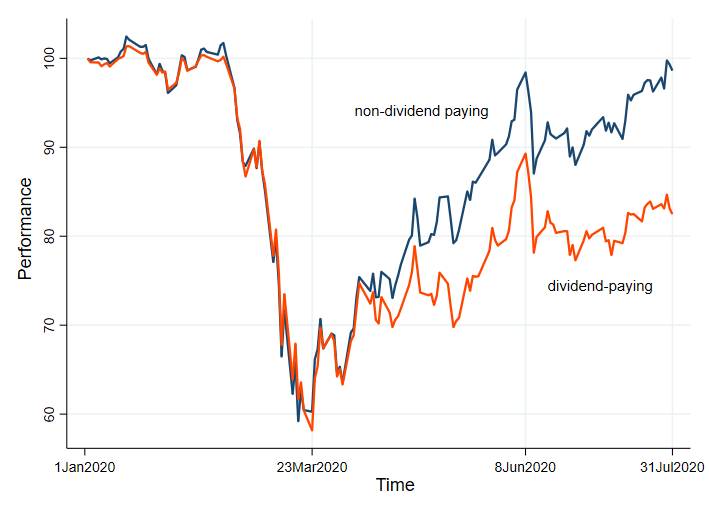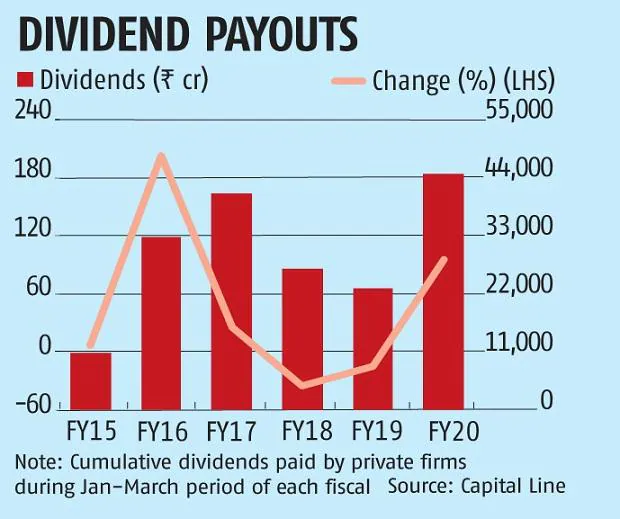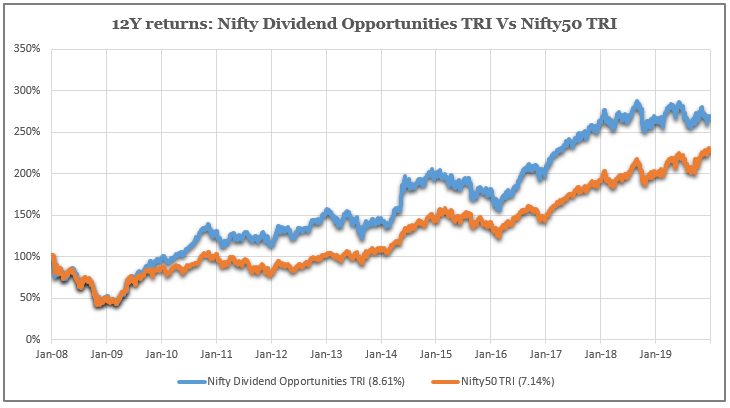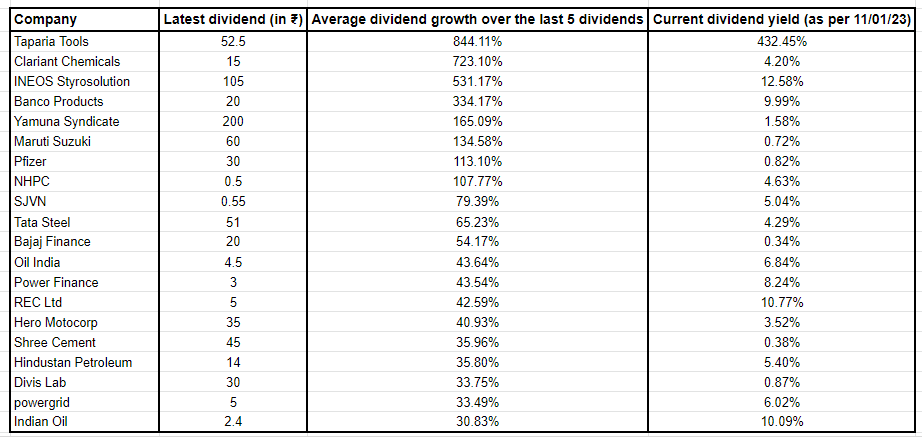Dividend stocks are a great way to diversify your portfolio if you are a long-term investor. Investing in dividend yield stocks is one of the ways of creating wealth and receiving a steady stream of income. Dividend-paying stocks allow investors to profit in two ways: stock price appreciation and payouts made by the company. But not only a dividend is the only source of cash flow you can generate from a company but it also helps you pick out companies with stable financial health, or do they? Let’s have a look at some of the best dividend stocks in India.
WHO SHOULD INVEST IN DIVIDEND STOCKS?
Well, there are multiple reasons why you should invest in a dividend stock, but this style of investing may not be favourable for every investor. Dividends are usually taxed at a much higher rate than capital gains taxes. When you pay taxes on dividends, they are not termed as capital gains tax, but as income tax. And as the highest tax bracket for capital gains tax is 15%, the highest bracket for income tax could go up to 30%.
Dividend-yielding stocks may not also be a wise choice of investing for traders and short-term investors, as the share price of dividend-yielding stocks, are known to appreciate at a lesser rate than non-dividend-paying stocks, which are considered to be growth worthy. Normally, dividend yield stocks are low-growth stocks and the market is always willing to give a higher P/E ratio for growth stocks than regular income stocks. Therefore, if you are a trader and want to make a substantial return in the market, then midcap/smallcap stocks with growth opportunities should be a better bet for you.
Also, in the regime of rising interest rates, the dividend yield seems to be less enticing for a regular investor, as now they start comparing the return from dividends to the returns of bonds and government securities.
WHY SHOULD YOU INVEST IN DIVIDEND-PAYING STOCKS?
There are a significant number of reasons as to why dividend stocks are a favourite amongst the investors, some of them are also an indicator of the financial well being of companies that you invest in:
Growth and Expansion of Profits
A company’s ability to pay out regular dividends—or cash distributions—goes a long way towards communicating its fundamental strength and sustainability to shareholders. If a company is consistently paying dividends over the years, and its dividend payouts have been increasing at a steady rate, this indicates that the company is making more and more profit each year, and is a fundamentally sound company with good financial health.
Dividend-yielding stocks are often known to outperform the indices and the markets over a longer period.
From 1980 to 2019, 75% of the returns of the S&P 500 came from dividends. This means the inclusion of dividend payments made up the majority of what stock investors have realized in returns on investment as compared to what their returns would have been without dividend payments. Also, the heads of Black Rock’s global equity team On December 6, 2010, suggested that 90% of US equity returns over the last century have been delivered by dividends and dividend growth.
The last couple of years has seen a substantial rise is dividend payouts by Indian companies to indicate their financial well-being and stable growth.
Underestimated Returns
Where dividend stocks on any given day are not known to give disproportionate returns to the regular investor as compared to midcap/smallcap growth stocks, people often underestimate the returns that the dividend stocks actually provide.
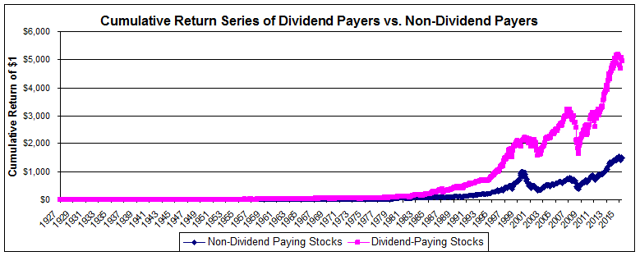
In the long term dividend stocks are known to give a better cumulative return than non-dividend paying stocks in both the Indian and the US markets.
Also in uncertain times and downturns in the economic scenario, most of these high dividend-paying companies have healthy cash reserves which could be utilized for paying dividends in difficult times as well when the core businesses get impacted. Therefore, dividend-paying stocks can also be served as a safe bet in uncertain market conditions.
Reducing Risk and Volatility
Dividends are a major factor in reducing overall portfolio risk and volatility. In terms of reducing risk, dividend payments mitigate any losses that occur from a decline in stock price. But the risk reduction benefit of dividends goes beyond that basic fact. Studies have historically shown that dividend-paying stocks outperform non-dividend-paying stocks during bear market periods. While an overall downmarket generally drags down stocks across the board, dividend-paying stocks usually suffer significantly less decline in value than non-dividend-paying stocks.
The market tends to be less likely to drive down the share prices of stocks that pay high dividends than those of companies that pay no dividends. This means that stocks that pay sizable, regular dividends usually trade in the market with less volatility than stocks that don’t pay dividends. Of course, this is not a hard and fast rule, but on average it holds true.
Dividends Preserve Purchasing Power of Capital
Dividends also help out in another area that investors sometimes fail to consider: the effect of inflation on investment returns. For an investor to realize any genuine net gain from an investment, the investment must first provide enough of a return to overcome the loss of purchasing power that results from inflation.
If an investor owns a stock that increases in price 3% over the course of a year, but inflation is at 4%, then in terms of the purchasing power of their capital, the investor has actually suffered a 1% loss. However, if that same stock that increased 3% in price also offers a 3% dividend yield, the investment has successfully returned a profit that outpaces inflation and represents an actual gain in purchasing power for the investor. The good news for investors in dividend-paying companies is that many dividend yields outpace inflation.
DIVIDEND YIELD VS DIVIDEND RATE. WHICH IS MORE IMPORTANT?
When we talk about dividends, dividend yield and dividend rates are the two most important metrics to measure them. Which one is more important?
While the dividend rate is the total amount of dividend that you’re expecting from the company, the dividend yield is the percentage of the profit which you can earn per share price.
A high dividend yield does not necessarily mean that the company is good, it can also mean that its stock has suffered a significant drop in share price, suggesting financial trouble that could imperil its ability to make future dividend payments. Therefore what an investor should keep in mind while investing in dividend stocks is that, whether the company is consistently increasing their dividend payments in a stable manner, which indicates that the company is actually generating a profit and is financially stable.
One could also look at the DPR (dividend payout ratio) of the company to analyse the sustainability of the company paying dividends. If the company’s DPR has been increasing consistently, it means that the company is using more portions of their profits to distribute the same amount of dividends, which indicates that the profits of the company have been declining, this could be a reason for worry for the investors.
BEST DIVIDEND STOCKS FOR 2023
Here are some of the best dividend stocks to invest in 2023. We have curated the list keeping in mind the average growth of dividends which the company has given over the last 5 dividends, to indicate whether the dividends have grown over the past years, which also shows whether the dividends paid by the company are sustainable or not.
The dividend yield of these stocks has also improved over the course of time. These stocks are not only financially stable and healthy but will also provide your portfolios with the diversification they need, to hedge risk and volatility in troubled times, while also adding some extra source of cashflow in your portfolio.


